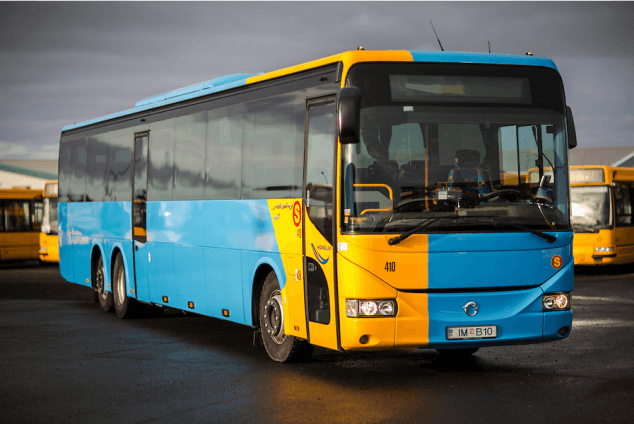Data-driven planning that consists of the local land use as its base is a vital issue of a mobility plan. While Indian towns have been diligent in preserving land use facts, they haven’t had much fulfillment in planning and amassing records on rural and concrete mobility styles.
By K Senthil Kumar
It isn’t any secret that mobility the world over is a sea exchange, and India isn’t any distinct. As the era cements its area as a fantastic leveler and furthers into the usa, we see many sectors getting disrupted. New entrants and begin-usage challenging incumbents, who, in turn, look to leverage their experience and assets to build sustainable market positions. This is a welcome exchange. It enables to prepare a critical mass to aid day after today’s population hubs and monetary hobby.
Broadly talking, three sectoral megatrends can reshape the enterprise for each consumer and enterprise. They have technology at their heart and the speed with which they’re developing. They may rework a automobile-centric machine, available presently, to a statistics-enabled, green, weather-friendly, and driverless environment soon.
These developments are:
Electrification and alternative energy trains;
Connected and autonomous automobiles (CAVs);
Mobility as a Service (MaaS).
Taken independently, each would notably disrupt the environment, but in aggregate, they will power remarkable change. Users could be capable of seamless transition among public, non-public, on-demand, and scheduled modes of transport. As the mobility environment evolves, its worldwide cost is forecast to develop more than $1 trillion by 2030.
Mobility in India
India is predicted to be a pacesetter in shared mobility using 2030 as a growing share of electric and self-reliant cars will enhance shared-mile economics. Indian transformation story is well below way. Disruptive technology is already permitting new business fashions/answers, opening up ample opportunities to discover in MaaS.
However, the magnitude and complexity of India call for a comprehensive framework. The high population density boom, coupled with our economic boom aspirations, warrants a tailored approach, precise to our context. The paintings are under manner at the national and national stage, with numerous initiatives inside the works.
Learning from those efforts and incorporating worldwide pleasant practices, a multipronged method is proposed. The framework is constructed around four pillars: (a) Connecting Bharat, (b) optimizing journey footprint, (c) selling seamless, cooperative shipping, and (d) adoption of inexperienced modes and technologies.
Each of those pillars needs to be supported using a standard set of enablers: Skills & employment, innovative delivery structures, public recognition, and governance & financing. If the suggested 3C (easy, convenient, and congestion-free) approach together with key pillars and enablers is made successfully, the outcomes may transform India’s mobility landscape.
Improvement in rural connectivity can help in extended connectivity of villages with high adoption of public shipping. PM 2.5 emissions can reduce notably across cities. Additionally, the rate on arterial roads of essential towns may be stepped forward considerably.
India desires a transport device that deploys resources at district degree. The usage of public shipping devices has to be measured periodically. A worldwide example is Switzerland, in which scheduling and availability of buses and public transport have been deliberate an excellent way to make sure most utilization and consumer pleasure.
Data-driven making plans that include the nearby land use as its base is essential for a mobility plan. While Indian cities were diligent in preserving land use facts, they haven’t had a lot of fulfillment in planning and amassing information on rural and urban mobility patterns. Assessing usage, routes, and traffic flow can help ease congestion in cities notably.
We need to initiate plans that deliver MaaS to attach rural shipping carriers with consumer calls. The Gram Parivahan Yojana may be an excellent first place to begin. Indian planners have commenced shifting on this path to enhance offerings for residents.
Some use cases are:
Long-time period making plans: The Mumbai Urban Transport Project and the ‘site visitors plan’ for Bengaluru.
Innovative financing: Delhi Metro efficaciously introduced the concept of branded stations.
Quality development: The Mumbai nearby rail machine has introduced AC wagons and visibly an excellent response. BMTC’s Vajra chain of AC buses (in Bengaluru) is getting popular, and BMTC is piloting Wi-Fi in buses.
Trip planner and virtual visibility: BMTC (Bengaluru) has launched an app for bus offerings.
Integrated bills: Mumbai is making plans for a thoughtful card on the way to work throughout four transport modes.
Feeder infrastructure: Bengaluru has brought Metro feeder buses.
Bus Rapid Transit: The BRT corridor in Bhopal has been a hit.
On-call for public transport: App-primarily based bus or van offerings consisting of Shuttl have begun operations in Mumbai and Delhi NCR within the past years.
In this context, it’s far first-rate to mention the Pune Urban Mobility Lab. A PPP between the Pune Municipal Corporation, Rocky Mountain Institute (RMI) of America, and eight-car organizations, this lab grows innovative mobility answers for Pune’s visitors, transport, and street infrastructure.
Pune has been selected in NITI Aayog and RMI’s Grand Challenge as India’s first Lighthouse City for mobility solutions. And the answers developed from this mission could be examined in Pune earlier than being scaled up throughout Mumbai, Hyderabad, Vishakhapatnam, Kochi, and Bengaluru.
If the roadmap is carried out, Indian cities’ challenged shipping and avenue infrastructure may be transformed. And We may have an India-centric answer that may be replicated across the state without any main problems or demanding situations.







